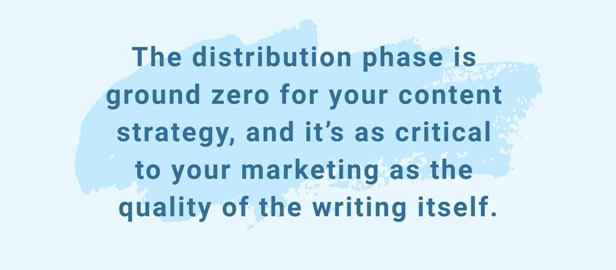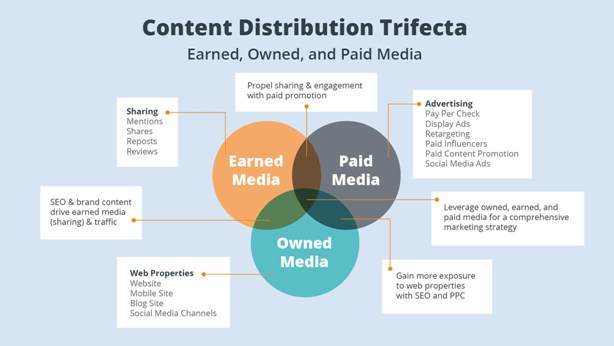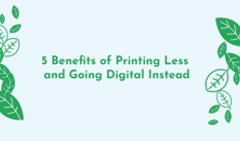The age of information brings countless opportunities for us to read, learn, and educate ourselves. And to be able to communicate with people all across the globe. At the same time, it makes us feel lost in thousands and thousands of words and interactions. We seek to be seen and valued: in our personal lives, work, and hobbies. Especially in creative work we’re doing, because it’s so dear to our hearts.
Long gone are the days when you created content, published it, and the right audience could find it without any promotion from your side. And even if this method ever did work, it was far from effective. So why take all the effort, gather your unique knowledge, and, let’s be honest about it, pour your soul into words if no one reads them in the first place?

That’s why today, the distribution phase is ground zero for your content strategy, and it’s as critical to your marketing as the quality of the writing itself. Of course, if you try to learn how to create such a strategy, you have to filter tons of information to find something that can be useful for your business. We know how overwhelming it can be to dive into the unknown waters and come to the surface carrying a ready solution.
But don’t worry, we’ve got you covered! Let’s go together through the essentials of content marketing distribution that help you hit the ground running. We’ll take it bird by bird and get into more details in our future articles. Stay tuned.
What Is Content Distribution

According to Hubspot, content distribution is the process of publishing, sharing, and promoting your content. It's how you provide your digital materials to your audience members for their consumption through various channels and media formats.
In fact, it’s the point where your business goals, target audience insights, marketing strategies, and creative executions come together to work for your success.
How to Create a Content Distribution Strategy
As we said above, great content needs to be distributed and promoted—otherwise, it’s practically useless. Your topics need to be accompanied by an intelligent content marketing distribution strategy that will reach the right audience, in the right way, at the right time. Most importantly, you should create this strategy before writing your marketing and sales materials. Let’s get right to the 3 main steps on how to create it, shall we?
#1 Explore your media platform distribution options
The more platforms—the better? Actually, no. The problem with the spray-and-pray approach to content distribution channels is that it holds little regard for whether the right people are being reached and whether this is your target audience that really needs what you have to offer.
Thus, it’s vital to evaluate the relative benefit of each publishing platform and channel before you share your materials there, and choose the ones that suit your goals best. Digital content distribution opportunities usually fall into one of three platform categories:

Source: Outbrain
Owned content distribution: Your brand owns and controls these content and distribution channels, such as your website, blog, email newsletter, and social media accounts.
Shared content distribution: This is when third-parties distribute your content or content about you through the press, guest article contributions, retweets or shares, or product reviews.
Paid content distribution: This is when you pay for content distribution, for instance, paid advertising. Payments can take many forms but often works on a cost-per-click (CPC) model where the owner of the content pays a certain amount every time someone clicks through to view it.
#2 Choose your main distribution option
And what’s next, you can ask. Maybe you use all three options in your content delivery strategy, maybe you have only one of them. The best way is to start with a single marketing channel on the media platform you own. Create a website, company blog, digital flipbook, or optimize the ones you have. Why? Because it’s much easier to control the flow of information and analyze the traffic you generate on a channel that you own. Once you build a strong audience of engaged followers, you can expand to other content distribution platforms to drive more traffic your way and reach an even wider audience.
#3 Build your distribution strategy
Content marketing and distribution require lots of planning to be successful. So when you’ve created a list of the most viable channel options, you can move forward to building an actionable distribution plan. Evaluate how each of the channels you’ve chosen can work for this task by researching the following questions:
- Who’s your ideal audience for the channel? Researching the target audience typical for every channel will help you envision the things that really matter to your clients, and the content they really want to consume. When you have this knowledge, content distribution becomes easy because you create materials that are aligned with your audience’s needs (and not created just for the sake of it). Plus, you distribute them in ways that fit your clients' behaviors.
- What is the type of content you distribute? What kind of information your audience usually interact with on each of the platforms. Instead of just sharing a link to the piece you’ve written and waiting for people to get curious and click, you have to tell them what they’ll find inside and how this knowledge will help them achieve a goal.
- What is your distribution schedule? Decide when you release your content and how often to publish it. Research how the brands in your industry build their social media strategies: what time of the day and week they post, what kind of posts get the most likes and reactions.
- How are your digital materials performing? The final step of a content distribution strategy is to evaluate the results. Which type of information and which channels are driving the most traffic to your website? Which piece is attracting the most signups to your newsletter? With all the data, you can make your content distribution strategy even better and more efficient, as well as create a content repurposing strategy.
So, above are the content distribution essentials for you to get started. Not as hard as it may have seemed in the beginning, right? You can easily plan your content distribution strategy along with your marketing and sales ones, and then empower it to bring you more traffic, and stronger customer retention.
And remember that your writing deserves to be seen and read. Content distribution is the key to make it happen by putting your content in front of the right and caring eyes and allowing your brand to enjoy an enhanced performance from every piece you create.





